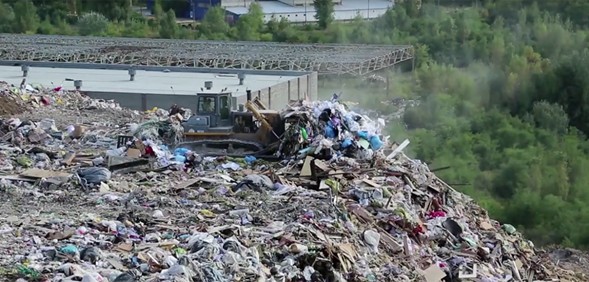Energy Storage with Plastic-to-Carbon Conversion

Breakthrough tech turns waste plastics into carbon materials for energy storage, powering supercapacitors, batteries, and hydrogen production.
Unlike traditional recycling, which often turns plastics into lower-value products, this new approach converts waste plastics into carbon-based materials for supercapacitors, batteries, and hydrogen production. This innovation tackles plastic waste and supports the growing demand for advanced energy storage solutions.
You can also read: Polymeric Interface Enhances Lithium-Batteries Efficiency.
Behind Plastic-to-Carbon Conversion
This innovation uses plastics’ carbon-rich nature to create high-performance materials. Researchers turn waste plastics into porous carbon structures through pyrolysis, chemical activation, and catalytic carbonization. Due to their excellent electrochemical properties, these have applications in energy storage devices, offering a sustainable alternative to traditional carbon sources like graphite.
Hierarchical Porous Structures: The Key to Performance
One of the most critical developments in this field is the creation of hierarchical porous carbon structures from waste plastics. These structures combine micropores, mesopores, and macropores, which provide multiple benefits.
- Micropores (less than 2 nm) increase the material’s surface area, enhancing its ability to store charge.
- Mesopores (2–50 nm) facilitate the rapid diffusion of electrolyte ions, improving the material’s power density.
- Macropores (greater than 50 nm) act as reservoirs for electrolytes, ensuring efficient ion transport.
For example, researchers converted PET from plastic bottles into porous carbon nanosheets with a specific surface area of 2198 m²/g and a specific capacitance of 120 F/g at 0.2 A/g. Similarly, they transformed PP from discarded centrifuge tubes into activated carbon nanosheets, achieving a specific capacitance of 349 F/g at 0.5 A/g. This performance rivals that of commercial carbon materials.
Applications in Energy Storage
Carbon materials derived from waste plastics are finding applications in a wide range of energy storage devices.
- Supercapacitors
Supercapacitors are known for delivering high power and fast charge-discharge cycles. This makes them perfect for electric vehicles, renewable energy systems, and portable electronics. Carbon materials made from waste plastics work especially well as supercapacitor electrodes because they have a high surface area and excellent conductivity.
For instance, hierarchical porous carbon derived from mixed waste plastics (PE, PP, PS, PET, and PVC) has demonstrated a specific capacitance of 120 F/g at 0.1 A/g in organic electrolytes. This performance is comparable to that of commercial activated carbon.
- Batteries
The demand for lithium-ion batteries is increasing quickly, thanks to the growth of electric vehicles and renewable energy systems. However, making traditional battery materials like graphite uses a lot of resources and harms the environment. Waste plastics can provide a more sustainable solution.
Researchers have successfully converted PS and PE into carbon materials for use in lithium-ion and sodium-ion batteries. For example, PS from coffee cups has been pyrolyzed to produce carbon materials with a specific capacitance of 271.3 mA h/g at 20 mA/g. These materials not only provide a renewable source of carbon but also demonstrate comparable or superior performance to traditional graphite anodes.

PS and PE can be converted into carbon materials used in batteries. Courtesy of Vito.
Other Applications: Hydrogen Production
Beyond solid-state energy storage, scientists are turning waste plastics into hydrogen, a clean and efficient energy source. They use processes like pyrolysis-gasification to break down plastics into hydrogen-rich gases. For example, a two-stage pyrolysis-gasification process with a nickel-manganese-aluminum catalyst can convert mixed plastic waste into hydrogen-rich gas. This method produces up to 94.4 mmol of H₂ per gram of plastic.
Challenges and Opportunities
While converting waste plastics into energy storage materials offers immense promise, several challenges remain. First, different types of plastics have varying chemical compositions. These differences can affect the quality and performance of the resulting carbon materials. Therefore, researchers must develop processes that can manage this diversity. Second, scaling up these processes from laboratory to industrial levels will require significant investment in infrastructure and technology. Finally, the environmental impact of the conversion processes needs attention. Researchers and engineers must optimize these processes to reduce emissions and energy consumption, ensuring their sustainability and long-term viability.
Read the full review here: Waste plastic to energy storage materials: a state-of-the-art review
